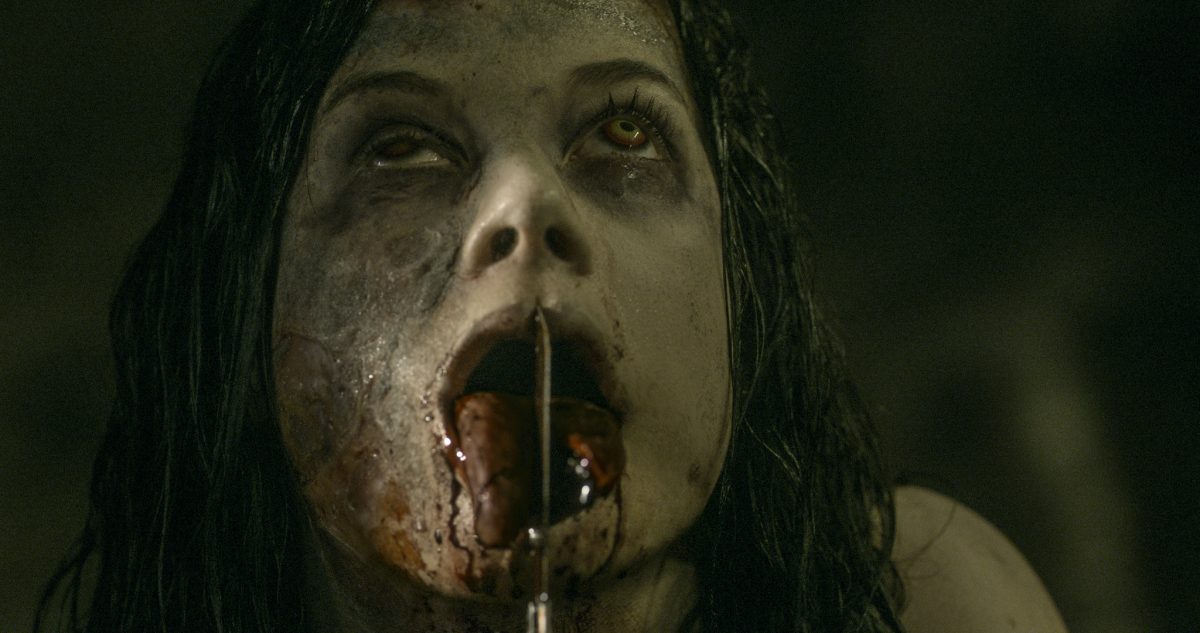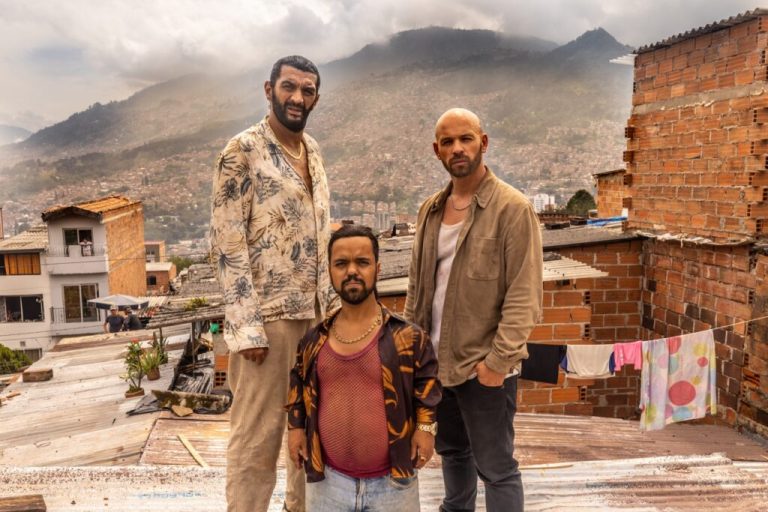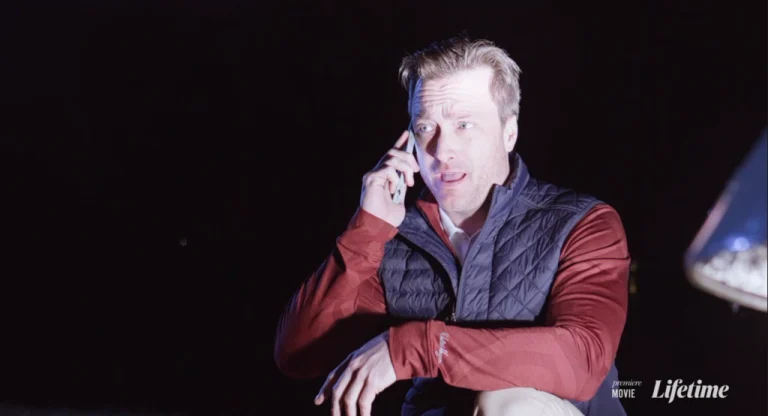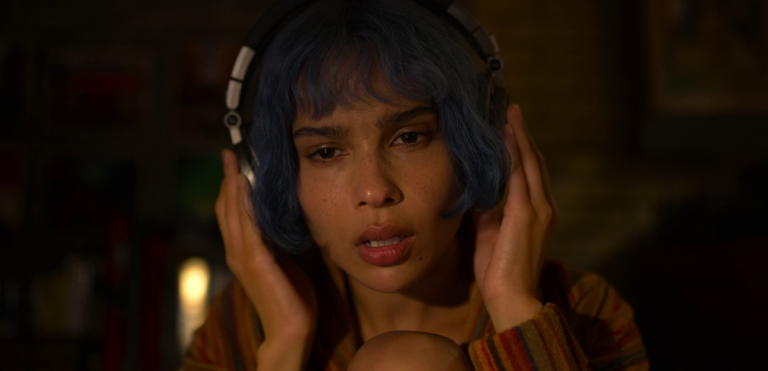Fede Álvarez’s Evil Dead (2013) reimagines Sam Raimi’s cult classic, pushing the gore to new extremes while rooting its horror in addiction, trauma, and the desperate fight for survival. Beneath the blood-soaked spectacle, the film is less about demonic possession than it is about the ways people battle their own inner demons—grief, guilt, and the aching need for redemption. The story centers on siblings David and Mia, who return to their family’s secluded cabin with friends Olivia, Natalie, and Eric.
Their goal is to help Mia quit heroin “cold turkey,” but the cabin harbors a curse far older and far more merciless than her addiction. When Eric recklessly recites passages from the Naturom Demonto, the so-called “Taker of Souls” is awakened, plunging the group into a nightmare where possession and withdrawal bleed together, transforming recovery into a descent through hell itself.
Spoilers Ahead
Evil Dead (2013) Plot Summary and Movie Synopsis:
Mia begins suffering withdrawal symptoms, but her friends dismiss her paranoia as drug cravings. In reality, she is the first to be claimed by the evil force in the woods, which manifests as her doppelgänger and invades her body. Her behavior spirals violently: scalding herself, attacking David, vomiting blood onto Olivia, and luring Natalie into the cellar.
The possession spreads chaos. Olivia, overtaken by the entity, mutilates herself before brutally attacking Eric, forcing him to kill her. Natalie, torn between loyalty and terror, amputates her own arm after being bitten by Mia. Eventually, she succumbs to her injuries, leaving David and Eric as the only survivors.
Eric, gravely wounded, interprets the book and warns David that Mia must be purified by fire, dismemberment, or burial to halt the evil. David chooses burial, a symbolic act of sibling redemption – laying Mia to rest not only physically but also spiritually. He resuscitates her after she flatlines, essentially giving her a second chance at life. But the cost is heavy.
Eric becomes fully possessed, forcing David to sacrifice himself by igniting the cabin. His death counts as the fourth soul, triggering the prophecy: blood rains from the sky, and the ‘Abomination’ rises in flesh. Now, Mia alone must face the ultimate evil. In a brutal climax, Mia severs her own trapped arm to free herself and finally destroys the Abomination with a chainsaw. She emerges blood-soaked but alive, though the evil book remains intact, leaving the horror unresolved.
Why Does Eric Read from the Book Despite Warnings?
Eric is both the intellectual and the skeptic of the group. His decision to read the Naturom Demonto is driven by reckless curiosity, a need to know what lies in a forbidden text. Symbolically, his action mirrors humanity’s tendency to unleash forces they cannot control, a nod to mythic tales of Pandora’s Box. Psychologically, Eric’s stubbornness can also be seen as insecurity masked by arrogance. Unlike David, who tries to heal relationships, Eric asserts control through knowledge; even if it damns them all. His guilt and later sacrifice underline this tragic flaw.
Why Does David Bury Mia Instead of Burning Her?
David’s choice is pivotal. The book prescribes burning or dismembering, but David cannot destroy his sister so brutally. The burial is both a literal exorcism and a metaphorical rehab, forcing Mia’s ‘addiction’ (the demon) to die before allowing her rebirth. It is also David’s redemption arc. Earlier, he abandoned Mia when their mother was dying, leaving her to suffer alone. By saving her now, even at the cost of his life, David finally fulfills his duty as her brother.
Why Does Mia Survive When Everyone Else Dies?

Mia’s survival is symbolic. As a recovering addict, she represents the person who has already endured inner torment and come back from the edge. Unlike her friends, who succumb to the evil one by one, Mia possesses the resilience of someone who has already confronted her demons. Her fight against the Abomination is a mirror of her earlier struggle with heroin: withdrawal, suffering, and a desperate battle for control. Losing her arm in the final act is a cruel metaphor – sobriety and survival come at a cost, but it’s a price she accepts.
What Does the Abomination Represent?
The Abomination is not just a physical demon but the culmination of the evil’s hunger for souls. In thematic terms, it represents:
- Addiction’s Final Form – the ultimate relapse, where the substance (or evil) consumes the last shreds of identity.
- Grief and Trauma – the embodiment of unhealed wounds within the family and friends.
By chainsawing it in half, Mia symbolically destroys the version of herself that addiction and possession threatened to create.
Evil Dead (2013) Movie Ending Explained:
What Does Mia’s Survival Mean?
The ending suggests ambiguity. Mia walks away alive, having conquered both possession and the Abomination. However, the Naturom Demonto remains untouched, its pages still intact. Evil is not destroyed, only delayed. Psychologically, this aligns with addiction: one can never entirely destroy the ‘book’ of temptation, only resist it day by day. Mia’s survival is victory, but not closure. The lingering evil hints that relapse, or another awakening, always remains a possibility. Mia’s bloody emergence into the dawn is both horrifying and hopeful. She has lost her friends, her arm, and her brother, but she has gained freedom from the demon, both literal and metaphorical.
- For David, his sacrifice redeems his past failures as a brother.
- For Eric, his curiosity leads to destruction, but his final stand aids Mia’s survival.
- For Natalie and Olivia, their deaths underscore the high cost of confronting evil without unity.
- For Mia, survival is rebirth; her journey through possession mirrors recovery, proving she is stronger than her demons.
Thematically, the film concludes that evil cannot be erased but can be fought. Survival requires sacrifice, resilience, and the willingness to sever what holds us down, even if it means losing a part of ourselves.







